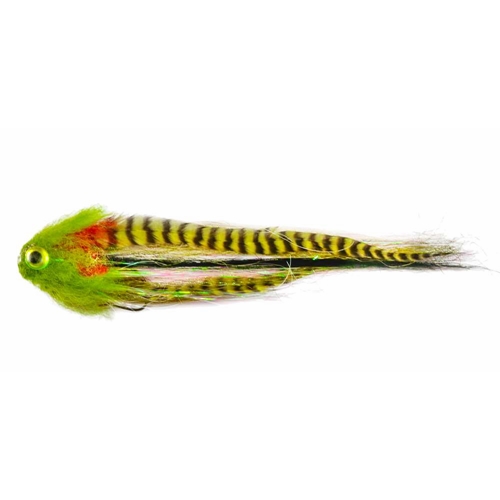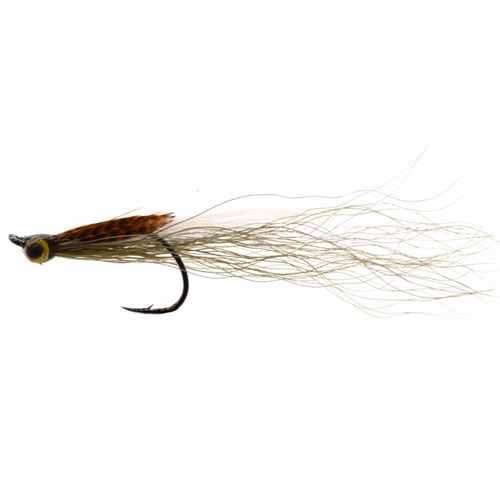Straggle Cased Caddis In Focus
Straggle Cased Caddis:
Given a spate, rising water flushes out cased caddis into the mouths of waiting trout, so when faced with high water the Straggle Cased Caddis will come to your rescue. For more pleasing results, it’s best to blend two different shades of straggle string that are wound in tandem. Whilst natural browns and olives should be your first choice, there are no restrictions here and you can just let your imagination run wild.
Dressing:
Hook: Kamsan B-830 #10-12
Thread: Semperfli 8/0 black waxed thread
Outrigger (weight): No4 split shot or Turrall 3.3mm black tungsten bead mounted on 20lb monofilament
Body: Semperfli sage and brown straggle string (1 strand of each)
Grub: Firefly caddis bead mounted on 20lb fluorocarbon
Legs: Brown partridge hackle fibres
Tying Tips:
To achieve a black head on the firefly caddis bead (grub) it’s vital to use fluorocarbon as this darkens off when melted over a lighter. We recommend you use a pair of small pliers to squeeze the tag ends of monofilament as these flattened surfaces now seat more securely when tying in the firefly bead and split shot/tungsten bead.
Fishing Tips:
With the weight positioned over the hook eye “outrigger” style this pattern is designed to fish with the hook point uppermost, the idea being to avoid snagging the riverbed less often. This fly is best fished in conjunction with something like a hare’s ear nymph. A 9ft level leader of 5lb Wychwood ghost mode fluorocarbon with a dropper positioned 2ft from the point sinks extremely quickly. A Veniard’s fluorescent wool indicator located where leader joins fly line helps with take detection.
Casts needn’t be far at all when nymphing, in fact, 30ft should be your maximum range. Using fan casts, explore the water immediately upstream of you. As the flies and indicator drift back towards you, keep in touch be simultaneously retrieving fly line and raising the rod tip. Naturally, once the flies near you, a now vertical rod tip is in the ideal position to execute a roll cast and deliver your flies once more. When you need to search more water, rather than lengthen line, simply take a couple of steps upstream. This way you’re always using a measured line to cover water more effectively.


















